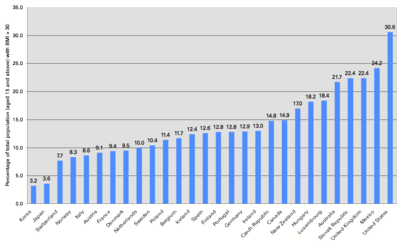No matter how you look at it or try to rationalize it, there is nothing healthy about being obese. According to the American Obesity Association, more than 50 percent of African-American women are obese, defined as someone who has body mass index (BMI) of 30 or higher. You can determine your body mass index by dividing your body weight in pounds by your height in inches squared and multiply by 704.5. For example, if you weigh 190 pounds and are five feet tall (60 inches) your BMI would be 37. In simpler terms, for a woman whose weight is 25 percent more than the maximum desirable for her height, she is considered obese. Men are considered obese when their weight is 20 percent more than the maximum desirable weight.
Causing nearly 300,000 deaths each year, obesity can lead to a variety of medical problems, including diabetes, hypertension, cancer, stroke and heart disease.
But as difficult as it may seem, doctors say, weight loss is possible with exercise and a balanced diet. The key is finding and maintaining a healthy weight, advises MaDonna Grimes, fitness expert and author of Work It Out: The Black Woman's Guide to Getting the Body You Always Wanted. A healthy weight is one in which your blood pressure and cholesterol levels are normal and you're at your optimal health.
To get rid of a few extra pounds, more people are turning to weight-loss surgery, considered by many to be an extreme step. It is only recommended for people who have a BMI of 40 or higher, or people who suffer from serious medical conditions that make it impossible to exercise. There are two types of obesity surgery, restrictive and combined restrictive and malabsorptive. In restrictive surgery, bands or staples are used to section off a small portion of the stomach. This restricts the amount of food your stomach can hold, causing you to feel full after eating only a small amount. Combined restrictive and malabsorptive surgery involves restrictive surgery, but in this procedure, the stomach is connected to the jejunum or ileum a part of the small intestine.
A consistent healthy diet and exercise program is the best way to naturally loose excess weight and keep it off. Once you reach a healthy size, the key to maintaining a healthy weight is commitment. "You can have a membership at a gym and still be fat," says Grimes. "You have to keep exercising it doesn't stop."
COPYRIGHT 2005 Johnson Publishing Co.
COPYRIGHT 2005 Gale Group




